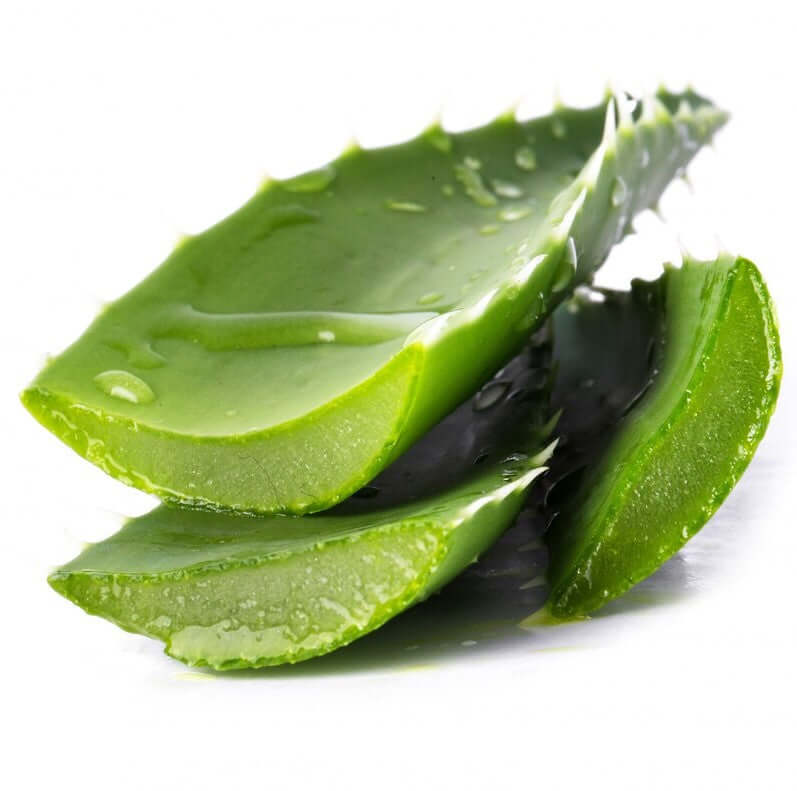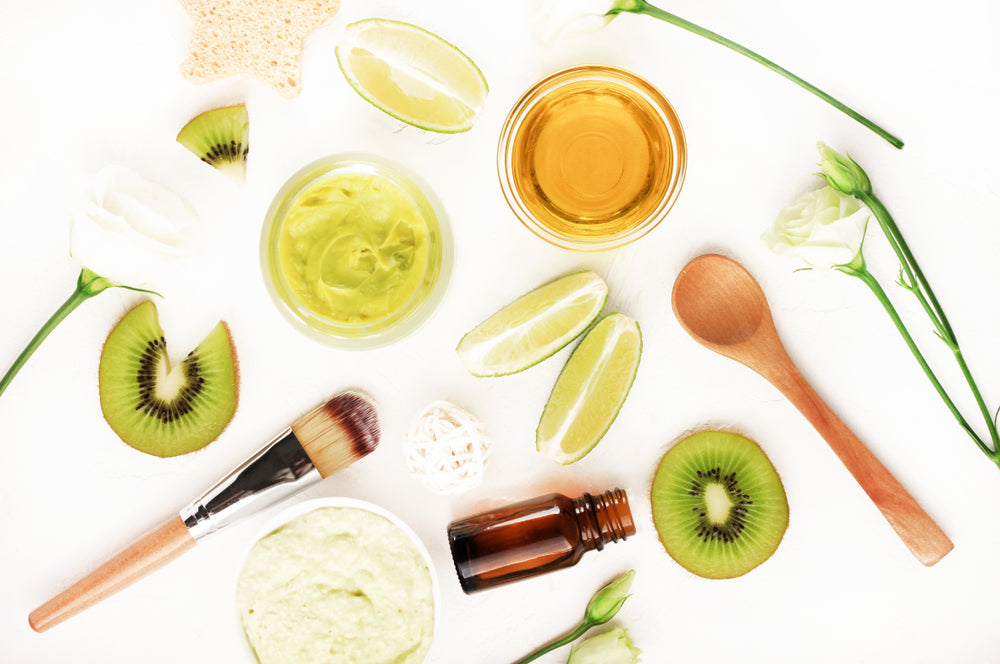Understanding the Importance of Separate Skincare Routines
A well-structured skincare routine isn't just about maintaining appearance—it's an essential investment in your skin's long-term health. The skin, our largest organ, faces different challenges throughout the day and night, requiring tailored approaches for morning and evening care.
During daylight hours, your skin works as a protective barrier against environmental aggressors like UV radiation, pollution, and free radicals. At night, it shifts into recovery mode, focusing on repair and regeneration as cell turnover accelerates. Understanding these distinct functions explains why separating your skincare into morning and evening routines isn't just a marketing ploy—it's rooted in skin physiology.
Research shows that following a consistent, properly sequenced skincare routine can significantly improve skin health markers, including hydration levels, barrier function, and overall appearance. The key lies not just in product selection but in the strategic application order that maximizes ingredient efficacy.
The Science Behind Day and Night Skincare Needs
Daytime Skin Functions and Challenges
During daytime hours, your skin primarily focuses on defense. Studies have found that skin's natural antioxidant reserves deplete throughout the day as they combat environmental stressors. The skin's sebum production also increases during daylight hours, particularly between noon and 2 PM, which explains why many people experience midday shininess.
Key daytime skin concerns include:
- Protection against UV radiation (both UVA and UVB)
- Defense against pollution particles and oxidative stress
- Maintenance of hydration despite environmental factors
- Oil control and minimizing pore appearance
- Creating a smooth canvas for makeup application
Nighttime Skin Recovery Processes
As evening approaches, your skin transitions to repair mode. Research has demonstrated that skin cell proliferation nearly doubles at night, with peak DNA synthesis occurring between 11 PM and 4 AM. Transepidermal water loss (TEWL) also increases during sleep, making nighttime hydration crucial.
Essential nighttime skin functions include:
- Accelerated cell renewal and turnover
- Collagen synthesis and structural repair
- Microcirculation improvement for nutrient delivery
- Processing and eliminating toxins accumulated during the day
- Barrier restoration and strengthening
Understanding these circadian rhythms helps explain why certain active ingredients perform better when applied at specific times—your skin is literally in a different state depending on the time of day.
Comprehensive Morning Skincare Routine
A morning routine should focus on protection and preparation for the day ahead. Each step builds upon the previous one, creating a foundation of care that supports skin health throughout the day.
Step 1: Gentle Cleansing
Begin your day with a proper cleanse to remove overnight accumulation of sebum and sweat without stripping essential moisture.
Benefits of Morning Cleansing:
- Removes excess oils produced during sleep
- Clears away any residual nighttime products
- Creates a clean canvas for daytime product application
- Helps balance pH levels after sleep
Product Recommendations:
- For normal to dry skin: Cream or lotion cleansers with hydrating ingredients like glycerin or hyaluronic acid
- For combination to oily skin: Gel cleansers with gentle surfactants
- For sensitive skin: Micellar water or sulfate-free cleansing milks
Application Technique: Use lukewarm (never hot) water and gentle circular motions. Limit cleansing time to 30-60 seconds to prevent moisture barrier disruption.
Step 2: Balancing Toner
Toners have evolved from astringent alcohol-based formulas to sophisticated treatment products that prepare the skin for subsequent steps.
Benefits of Morning Toning:
- Removes any cleanser residue
- Rebalances skin's pH to optimal levels (4.5-5.5)
- Adds first layer of hydration
- Enhances penetration of following products
Ingredients to Look For:
- Hydrating agents: Glycerin, hyaluronic acid, aloe vera
- Balancing ingredients: Rosewater, chamomile extract, green tea
- Brightening components: Niacinamide, licorice root extract
- Antioxidants: Vitamin E, white tea extract
Application Tip: Apply with clean hands by pressing into skin rather than wiping, which can cause unnecessary friction and irritation.
Step 3: Targeted Treatment Serums
Morning serums should focus on protection and targeted concerns visible during daylight hours.
Benefits of Morning Serums:
- Deliver high concentrations of active ingredients
- Address specific skin concerns with precision
- Create antioxidant shields against environmental damage
- Boost hydration with minimal heaviness
Best Morning Serum Ingredients:
- Vitamin C (L-ascorbic acid or stable derivatives) - 10-20% concentration for brightening and antioxidant protection
- Niacinamide (vitamin B3) - 2-5% for barrier support and oil regulation
- Peptides for collagen support and firmness
- Hyaluronic acid in multiple molecular weights for multi-level hydration
- Green tea polyphenols for pollution defense
Application Strategy: Apply 3-4 drops, allowing 30-60 seconds of absorption time before proceeding to the next step.
Step 4: Eye Area Treatment
The delicate eye area contains the thinnest skin on your face and requires specialized care.
Benefits of Morning Eye Treatments:
- Address puffiness common after sleep
- Brighten dark circles that appear more prominent in daylight
- Create smooth canvas for concealer application
- Protect delicate skin from environmental stressors
Key Ingredients for Morning Eye Products:
- Caffeine to reduce puffiness and improve circulation
- Vitamin K for dark circle reduction
- Light-reflecting particles for immediate brightening
- Peptides for structural support
- Hyaluronic acid for hydration without heaviness
Application Method: Use your ring finger (which naturally applies the least pressure) to gently pat product from the outer corner inward, avoiding direct application to the lash line.
Step 5: Lightweight Moisturization
Daytime moisturizers should provide adequate hydration without creating a heavy layer that interferes with subsequent products or makeup.
Benefits of Morning Moisturization:
- Seals in treatment products applied previously
- Provides necessary hydration for skin function
- Creates protective barrier against environmental stressors
- Minimizes transepidermal water loss throughout the day
- Helps maintain proper oil-water balance
Ideal Morning Moisturizer Features:
- Lightweight, fast-absorbing texture
- Non-comedogenic formulation
- Balanced humectants (water-attracting) and emollients (softening)
- Antioxidants for additional protection
- Oil-controlling ingredients for combination/oily skin types
Application Focus: Pay special attention to areas prone to dryness, such as cheeks and around the mouth.
Step 6: Broad-Spectrum Sun Protection
Regardless of weather conditions or planned indoor activities, sun protection remains the most critical step in any morning routine.
Benefits of Daily Sunscreen:
- Prevents premature aging (90% of visible skin aging is UV-related)
- Reduces hyperpigmentation risk
- Lowers skin cancer risk
- Prevents breakdown of collagen and elastin
- Supports overall skin barrier health
Sunscreen Selection Guidelines:
- Minimum SPF 30, preferably SPF 50 for complete protection
- Broad-spectrum coverage (UVA and UVB protection)
- Formulation suited to skin type (mineral-based for sensitive skin)
- Additional beneficial ingredients like antioxidants or niacinamide
- Water resistance if swimming or heavy sweating is anticipated
Application Requirements: Use approximately ¼ teaspoon for the face alone, extending to neck and ears. Reapply every 2 hours of sun exposure.
Comprehensive Evening Skincare Routine
Evening skincare focuses on deep cleansing, treatment, and recovery support. This is when you can introduce more potent active ingredients that work with your skin's natural nighttime repair processes.
Step 1: Thorough Cleansing
Evening cleansing must be more comprehensive than morning cleansing to remove accumulated debris.
Evening Cleansing Benefits:
- Removes makeup, sunscreen, and environmental pollutants
- Clears away excess oil production from throughout the day
- Prevents pore congestion and potential breakouts
- Prepares skin to receive treatment products
Double-Cleansing Method:
- First cleanse: Oil-based cleanser or micellar water to dissolve makeup and sunscreen
- Second cleanse: Water-based cleanser to remove remaining impurities and prepare the skin
Effectiveness Tip: Ensure your cleanser has a pH between 4.5-6.0 to maintain skin's acid mantle integrity.
Step 2: Treatment Toner
Evening toners can be slightly more active than morning versions, helping to prepare the skin for intensive treatments.
Evening Toner Benefits:
- Removes any final traces of makeup or cleanser
- Resets skin pH after cleansing
- Begins the treatment phase of your routine
- Can provide gentle exfoliation with appropriate ingredients
Evening Toner Ingredients:
- Mild AHAs like lactic acid (5-10%) for surface exfoliation
- BHAs like salicylic acid (0.5-2%) for pore clearing
- PHA (polyhydroxy acids) for sensitive skin exfoliation
- Hydrating factors like sodium PCA or panthenol
- Calming agents like allantoin or beta-glucan
Application Enhancement: Apply toner to slightly damp skin to maximize absorption and hydration benefits.
Step 3: Targeted Treatment Serums
Evening is the optimal time for more potent active ingredients that may cause photosensitivity or require overnight hours to work effectively.
Evening Serum Benefits:
- Delivers concentrated active ingredients during peak cell renewal
- Addresses specific concerns with more potent formulations
- Works with the body's natural repair cycle
- Can include ingredients not suitable for daytime use
Recommended Evening Serum Ingredients:
- Retinoids (retinol, retinaldehyde, or prescription tretinoin) for cell turnover and collagen stimulation
- AHAs in higher concentrations (10-15%) for exfoliation and brightening
- Peptide complexes for overnight repair
- Growth factors for cellular communication and repair
- Bakuchiol as a gentler retinol alternative
Usage Strategy: If using multiple serums, apply from thinnest to thickest consistency, allowing 3-5 minutes between layers for optimal absorption.
Step 4: Evening Eye Treatment
Nighttime eye products can be richer and more treatment-focused than daytime formulations.
Evening Eye Treatment Benefits:
- Delivers intensive hydration to prevent morning puffiness
- Supports collagen production around the eye area
- Targets fine lines with higher concentrations of active ingredients
- Works with natural repair processes during sleep
Evening Eye Product Ingredients:
- Retinol derivatives specifically formulated for eye area
- Peptide complexes for structural support
- Ceramides for barrier strengthening
- Plant oils rich in essential fatty acids
- Antioxidants for repair from daily oxidative stress
Application Enhancement: For extra benefits, store your eye cream in the refrigerator to help reduce puffiness when applied.
Step 5: Targeted Spot Treatments
Addressing specific concerns with concentrated treatments is most effective in the evening routine.
Spot Treatment Benefits:
- Delivers high-concentration actives only where needed
- Targets individual concerns without affecting entire face
- Works during sleep when skin is most receptive to repair
Common Spot Treatments:
- Benzoyl peroxide (2.5-5%) for inflammatory acne
- Sulfur compounds for multiple skin concerns
- Higher-concentration vitamin C for dark spots
- Azelaic acid for rosacea and post-inflammatory hyperpigmentation
- Specialized peptides for expression lines
Application Protocol: Apply to completely dry skin after serums but before moisturizer, and only to affected areas.
Step 6: Rich Moisturization
Evening moisturizers should provide deeper, more comprehensive hydration to support overnight recovery processes.
Evening Moisturizer Benefits:
- Prevents transepidermal water loss, which increases during sleep
- Seals in active ingredients from previous steps
- Provides sustained hydration throughout the night
- Supports barrier repair and strengthening
Evening Moisturizer Components:
- Ceramides to reinforce skin barrier function
- Peptides for structural support
- Plant oils rich in essential fatty acids
- Humectants like glycerin and sodium hyaluronate
- Occlusive agents to prevent moisture loss
Application Strategy: Focus on areas prone to dryness, applying slightly more product than during daytime.
Step 7: Optional Face Oil
A facial oil can serve as the final step to lock in all previous products and provide additional nourishment.
Face Oil Benefits:
- Creates occlusive layer to prevent moisture evaporation
- Delivers essential fatty acids not found in water-based products
- Supports lipid barrier repair
- Provides antioxidants and nutrients in a highly bioavailable form
Recommended Facial Oil Types:
- Squalane for all skin types (mimics skin's natural sebum)
- Jojoba oil for balance (closest to human sebum)
- Rosehip seed oil for regeneration and vitamin A content
- Sea buckthorn oil for barrier repair
- Argan oil for antioxidant protection
Application Method: Warm 3-5 drops between palms and press gently into skin rather than rubbing to minimize friction.
Weekly Additions to Your Skincare Routine
Supplement your daily routines with weekly treatments that provide deeper results without over-treating the skin.
Exfoliation Treatments
Benefits of Regular Exfoliation:
- Removes accumulated dead skin cells
- Improves product penetration
- Enhances natural radiance
- Helps prevent congestion and breakouts
- Stimulates cell renewal
Exfoliation Options:
- Chemical exfoliants: AHA/BHA treatments (15-20%) used 1-2 times weekly
- Enzyme exfoliants: Fruit enzymes that dissolve protein bonds between dead cells
- Physical exfoliants: Fine particles or tools that manually remove dead skin
Masking Treatments
Benefits of Weekly Masks:
- Delivers concentrated ingredients in an occlusive environment
- Addresses specific concerns intensively
- Provides self-care ritual with psychological benefits
- Complements daily routine with deeper treatment
Mask Types and Timing:
- Clay masks: Best used during the day or early evening to absorb excess oil
- Hydrating masks: Ideal before special events or after exfoliation
- Sheet masks: Perfect for quick hydration boosts anytime
- Overnight masks: Replace night cream 1-2 times weekly for intensive treatment
Seasonal Adjustments to Your Skincare Routine
Effective skincare adapts to changing environmental conditions and skin needs throughout the year.
Winter Routine Modifications
- Increase hydration with richer moisturizers
- Add facial oils to combat dryness
- Reduce exfoliation frequency
- Incorporate barrier-repair ingredients
- Continue sun protection despite decreased daylight
Summer Routine Adjustments
- Switch to lighter, gel-based moisturizers
- Increase antioxidant protection
- Use oil-control products if needed
- Upgrade to higher SPF and water-resistant formulations
- Increase gentle exfoliation to prevent congestion
Customizing Your Routine for Different Skin Types
Dry Skin Considerations
- Use cream or oil cleansers year-round
- Skip morning cleansing if very dry
- Layer multiple hydration products
- Include facial oils in both morning and evening
- Focus on barrier-strengthening ingredients
Oily/Combination Skin Adjustments
- Use gel or foam cleansers
- Consider BHA products for oil control
- Choose oil-free or mattifying moisturizers
- Incorporate clay masks weekly
- Don't skip moisturizer—dehydration can increase oil production
Sensitive Skin Modifications
- Perform patch tests with all new products
- Focus on minimal ingredient lists
- Incorporate barrier-supporting ceramides
- Choose physical sunscreens over chemical
- Avoid fragrance and common irritants
Common Skincare Routine Mistakes to Avoid
Over-Complicating Your Routine
Using too many active ingredients simultaneously can lead to irritation, barrier damage, and compromised results. Focus on quality over quantity, with no more than 2-3 active ingredients per routine.
Inconsistent Application
Skincare benefits come from consistent use over time. Most products require 4-12 weeks of regular use to show significant results. Create a sustainable routine you can maintain long-term.
Improper Product Sequencing
Using products in the wrong order can significantly reduce their effectiveness. Always move from thinnest to thickest consistency, with actives applied early in the routine for maximum penetration.
Neglecting the Neck and Décolletage
These areas show aging signs quickly but are often forgotten in daily routines. Extend all steps from your face routine to include these vulnerable areas.
Frequently Asked Questions About Skincare Routines
How long should I wait between applying products?
Active ingredients generally benefit from 30-60 seconds between applications. Products with pH-dependent actives like vitamin C or retinol may require 3-5 minutes for optimal effectiveness.
Do I need different products for day and night?
Yes, ideally. Daytime products should focus on protection and lighter textures, while evening products can be more treatment-oriented and richer in consistency.
When should I apply prescription skincare products?
Follow your dermatologist's specific instructions. Generally, prescription products are applied to clean, dry skin, often with a waiting period before applying other products.
Can I use retinol and vitamin C together?
These ingredients traditionally work best at different pH levels, making them ideal for separate routines—vitamin C in the morning and retinol at night. Newer, stabilized formulations may allow for more flexibility.
How do I know if my routine is working?
Look for improvements in skin texture, hydration, and clarity rather than expecting dramatic overnight changes. Take photos monthly in the same lighting to track subtle improvements objectively.
Conclusion: The Long-Term Benefits of Consistent Skincare
Following well-structured morning and evening skincare routines isn't just about addressing current concerns—it's an investment in your skin's future health. Research confirms that consistent, appropriate skincare can significantly delay visible aging signs and maintain skin barrier function as you age.
Remember that individual needs vary, and the best routine is one you'll maintain consistently. Start with the essential steps outlined here, adjusting based on your skin's response and needs. With patience and consistency, you'll discover the perfect balance that keeps your skin at its healthiest around the clock.
By understanding the science behind day and night skincare needs and following these expert guidelines for product selection and application, you're setting the foundation for a lifetime of skin health—not just temporary improvements.





